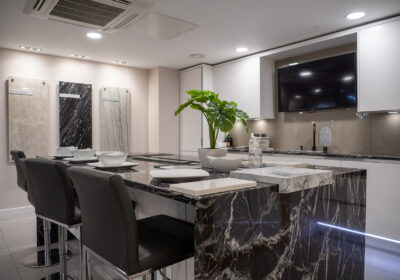Portsmouth, UK-based lifting, transport and storage specialist Rapid Response Solutions (RRS) combined transport and hydraulic skidding solutions to defy heavy UK snowfall and deliver a 25t principal supply point (PSP), an integral component of Network Rail’s signal upgrade project at Copley Village, near Halifax.
RRS was given a scope of work by electrical company Kent Group (UK) Ltd., based approx. 60 miles south of the jobsite in Mansfield, which was delivering the 14.6m-long, 3m-wide, and 3.1m-high PSP for Siemens to execute a crucial phase of the project. RRS chose a Volvo three-axle tractor unit with a Nooteboom four-axle extending semi low loader, and 300t capacity Hydra-Slide HT300 hydraulic skidding system.
The transport equipment was utilised to collect the PSP from Kent Group and deliver it to the site, before the heavy track system skidded it into position alongside the railway. Paul Barber, managing director at RRS, explained that inclement weather was easily overcome. Of greater significance was navigating the access route through Copley and, once onsite, the proximity of the unit’s final destination to a high voltage power pylon.
Barber said: “The first issue the snow gave was with the packing; we had to clear all the fallen snow from the packing areas as any remaining snow would have compacted and moved once the load went over it. The final position of the PSP was between three and four metres of the live railway and the access route meant turning left on a very tight crossroads.”
In fact, the tractor and trailer were selected principally to keep the overall length of the vehicles as short as possible, mindful of one particularly tight junction en route. Extensive planning and several site meetings prior to the job stood the RRS team—comprising two lorry drivers, two escort drivers, and four riggers—in good stead, but daily conference calls up to 6pm on the (Saturday) night before the job were required owing to the weather.
Green signal
Barber said: “On the day of the move we all met up at Siemens’ office for an induction and site brief. Once the brief was complete the install team went straight to site to carry out an inspection of the work area with the build manager. It was agreed by all parties that it was safe to carry out the task. There was a sprinkling of snow on the ground but it wasn’t icy; the snow was easily brushed away to give a clear landing slab.”
The transport equipment was parked at a motorway services 10 miles away the night before. The police had specified two escort vehicles so before the load moved, all drivers travelled to site in the escort van to check road conditions. The final turn into Copley Lane was tight and on a downwards slope. Had the road been icy it would have been impossible to negotiate the turn. Siemens oversaw traffic management whilst the manoeuvre was carried out.
Upon arrival, the PSP was jacked up off the trailer using four jacks and RRS’s synchronous power pack. Once it was supported on 1m x 200mm x 100mm hardwood timber blocks, the skidding track was placed under the PSP using a telehandler. It was then jacked down onto the skid shoes before being slid across the foundation slab. The unit was then jacked up so tracks could be removed prior to final lowering into position.
Barber explained that the HT300 was chosen as it is capable of supporting loads without the four 6m sections of tracks being fully supported, eliminating the need for support beams or extra packers. Hydra-Slide alignment shoes were also on standby should there have been a requirement to carry out any final positioning.
The power lines were so close to the final position that it was not an option to use a mobile crane to unload the unit. Had a crane been the only option, Nation Grid would have needed to isolate the power. This was the first time this method of offload had been used on the project and it was deemed a success. Without the skidding system it had looked impossible to deliver a modular solution to the site and it was believed that a traditional building would need to be constructed and the equipment populated onsite.






